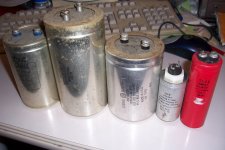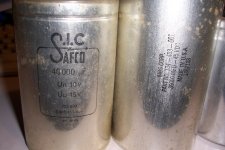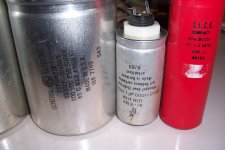I suspect the answer is yes but that is just my guess.
I have a collection of unused, old (up to 50 years old) computer grade electrolytics. They are primarily Mallory, Sangamo and Sprague that I had bought surplus, but never used all of them. They appear to be completely intact.
I suspect that I shouldn't start a new project with them (if nothing else they are generally bigger than today's caps) but I was wondering if they age when they are unused.
I can't really measure them too well, since my LCR meter( a DER EE DE-5000) can't measure caps having capacitance of 10,000 to 15,000 uF.
Thanks.
I have a collection of unused, old (up to 50 years old) computer grade electrolytics. They are primarily Mallory, Sangamo and Sprague that I had bought surplus, but never used all of them. They appear to be completely intact.
I suspect that I shouldn't start a new project with them (if nothing else they are generally bigger than today's caps) but I was wondering if they age when they are unused.
I can't really measure them too well, since my LCR meter( a DER EE DE-5000) can't measure caps having capacitance of 10,000 to 15,000 uF.
Thanks.
Unfortunately, yes. In fact the problem may be worse in storage than with voltage applied. build yourself a quick bridge and measure them- http://www.conradhoffman.com/cap_bridge.pdf
Most datasheet for good caps will give you shelf life information - however this will apply after voltage treatment has been applied to the capacitor (i.e. reform it). Some datasheets will also state it needs reforming to be in spec.
If I am using new-old caps in something I care about I tend to reform them, for stuff up to 50V I use a few kohms (whatever comes to hand) at rated voltage until the leakage current is below the value in the datasheet, and then discharge them before use. Always make sure they are discharged after reforming, else you might blow parts if you stick them straight into a circuit (as I have done!)
If I am using new-old caps in something I care about I tend to reform them, for stuff up to 50V I use a few kohms (whatever comes to hand) at rated voltage until the leakage current is below the value in the datasheet, and then discharge them before use. Always make sure they are discharged after reforming, else you might blow parts if you stick them straight into a circuit (as I have done!)
Thanks, everyone, for the quick responses. I will first try reforming them and try Conrad's capacitor bridge, butmore for curiosity than anything else. It seems to me there is really no compelling reason to keep them around. Besides, I can use the shelf space for something else!
My experience is better. I have about 500 *****y replaced caps out of hammond wurlitzer & allen organs, dynaco equip, old radios, all ****. I have about 5 screw terminal mallory huge caps from the 70's, probably unused, that are fine. But I don't trust them; the elastomer seal has been attacked by oxygen all these years. I do use them for prototyping and speaker protection from amps while being repaired so I can listen while testing. No failures so far. Speaker protection, a 10000 uf and a 47000 uf go minus to minus between amp out & speaker. Back to back polar caps sounds a little funny at low wattage, but the sound of a radio through an amp under repair tells me right when a connection has disconnected and whanged it into massive DC or oscillation out. Without damaging the speaker. What I was probing when the sound changed is likely the point where the bad solder joint etc is.My experience with 1970s "Computer Grade" is WORSE than commercial caps of the same vintage.
Last edited:
Big cans with screw connections look almost eternal: I have Safico's, Mallory's etc dating back from the seventies and even sixties, and they still work perfectly.
I do not even care to reform them when I start to put them into service: for low voltage parts, it doesn't look necessary.
I would be more prudent with higher voltage types, but they can certainly be reformed safely.
Very large caps have a large volume to area ratio, and in addition the seal (often a double one) only takes a very small part of that area: the rest is a big disk of thermoset material, meaning the losses of electrolyte or hydrogen are minimal, unlike smaller, full rubber types.
If the cap is of good quality, with materials containing few impurities, they remain stable for a very long time.
That is generally the case for computer-grade caps. The same cannot be said of consumer grade caps made during the same period: some litterally disintegrate because of internal corrosion
I do not even care to reform them when I start to put them into service: for low voltage parts, it doesn't look necessary.
I would be more prudent with higher voltage types, but they can certainly be reformed safely.
Very large caps have a large volume to area ratio, and in addition the seal (often a double one) only takes a very small part of that area: the rest is a big disk of thermoset material, meaning the losses of electrolyte or hydrogen are minimal, unlike smaller, full rubber types.
If the cap is of good quality, with materials containing few impurities, they remain stable for a very long time.
That is generally the case for computer-grade caps. The same cannot be said of consumer grade caps made during the same period: some litterally disintegrate because of internal corrosion
Some examples of vintage caps:
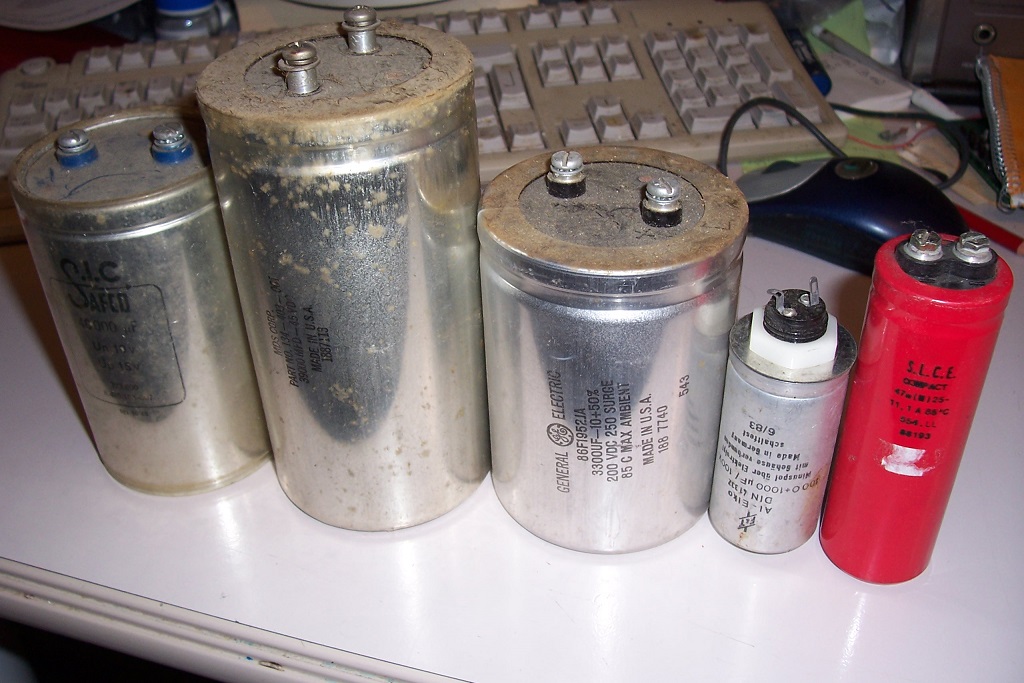
From left to right, in chronological order: a SIC/Safco 40,000µF/10V (1963), a MDS 39,000µF/45V (exact date unknown, early seventies), a GE 3300µF/200V (1977), a F&T 1000+1000µF/100V (1983), a SLCE 47,000µF/25V (1988).
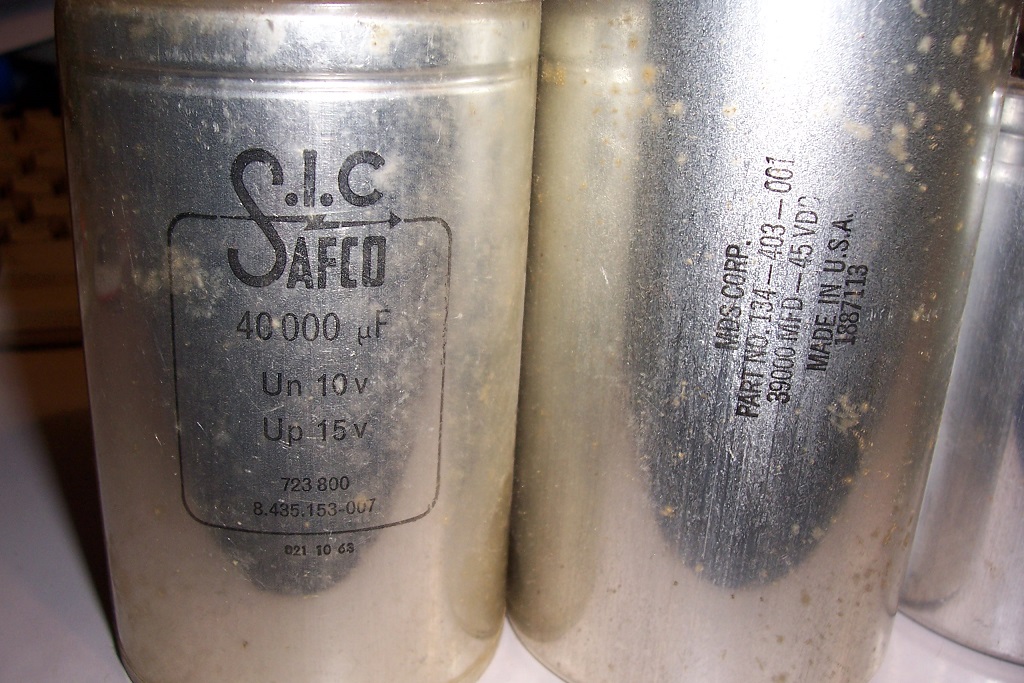
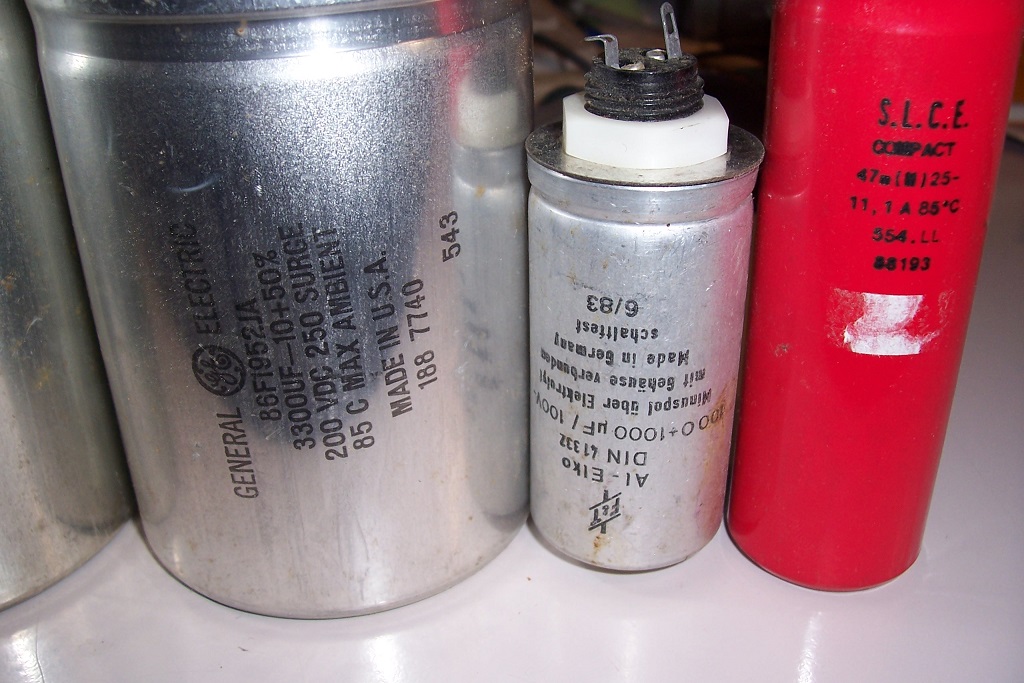
Those have been not been used (yet), they have been gathering dust for decades on a shelf, but their twin brothers have worked, also for decades, in my bench and lab supplies, and I know that I could use them without problem, and without reforming them, except the F&T and the GE.
The F&T is a rare example of dodgy cap, and I wouldn't risk using it in anything serious.
German manufacturers generally have a very high level of excellence (like Siemens or ROE), but there are exceptions, and F&T is clearly one of them.
The construction type is antiquated for something made in 1983, and the quality standard also lags.
The GE one is a very good cap, but I wouldn't take the risk of a full 200V cold-start: the explosion of such a massive can could result in serious damages.
In general, computer-style caps are OK, even if they are very ancient.
Of course, the volume/capacity ratio is ridiculous by today's standards (the 40,000µF/10V is thumb-size nowadays), but they are also incredibly reliable by the same standards
From left to right, in chronological order: a SIC/Safco 40,000µF/10V (1963), a MDS 39,000µF/45V (exact date unknown, early seventies), a GE 3300µF/200V (1977), a F&T 1000+1000µF/100V (1983), a SLCE 47,000µF/25V (1988).
Those have been not been used (yet), they have been gathering dust for decades on a shelf, but their twin brothers have worked, also for decades, in my bench and lab supplies, and I know that I could use them without problem, and without reforming them, except the F&T and the GE.
The F&T is a rare example of dodgy cap, and I wouldn't risk using it in anything serious.
German manufacturers generally have a very high level of excellence (like Siemens or ROE), but there are exceptions, and F&T is clearly one of them.
The construction type is antiquated for something made in 1983, and the quality standard also lags.
The GE one is a very good cap, but I wouldn't take the risk of a full 200V cold-start: the explosion of such a massive can could result in serious damages.
In general, computer-style caps are OK, even if they are very ancient.
Of course, the volume/capacity ratio is ridiculous by today's standards (the 40,000µF/10V is thumb-size nowadays), but they are also incredibly reliable by the same standards
Attachments
Certainly nothing worse than mostly organic solvents mainly used in modern, high temp caps: most of these caps were 85°C, and could use a water-based electrolyte, with some dissolved salts, boric acid, etc.
Rather innocuous compared to modern electrochemical devices
Rather innocuous compared to modern electrochemical devices
- Home
- Design & Build
- Parts
- Do Old, Unused Computer Grade Electrolytics Age?
